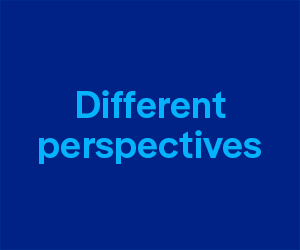
By Konrad von Finckenstein
THE ONLINE NEWS ACT, recently introduced by Heritage Minister Pablo Rodriguez is explained on Canadian Heritage’s website as follows: “Digital platforms have come to play an integral role in Canada’s news ecosystem, shifting the way Canadians access news content that is vital to democracy. They can play an important role in supporting the production of trusted news and information.”
The basic underlying rationale is clear. Canadian news businesses, primarily newspapers, have been severely disrupted by the Internet. Their advertising market and classified ad market has gone online and newspapers’ financial viability is in great danger.
Online platforms do not provide news themselves but distribute news obtained through linking. While news businesses gain greater exposure of their news content on platforms through linking, most of the revenue stays with the platform, hence the attempt by this act to force platforms to share some revenue with newspapers.
The act is modeled after the Australian News Media and Digital Platforms Mandatory Bargaining Code Act 2021. However, that act, while promulgated, calls for the minister to designate the platforms to which it applies. No such designation ever took place because Google and Facebook struck a deal with the majority of Australian news publishers. It is far from clear whether it could be implemented but given the agreements reached no such action is needed. Some critics have called this a successful shake down by the Australian Government.
It is hoped by the Canadian government that the bill, once enacted, will be implemented speedily. That will not be possible.
The act requires the CRTC to make two major decisions:
First: to whom does the act apply.
Platforms called digital news intermediaries (DNIs) have the duty to notify the CRTC that the act applies to them or if they fail to do so, at the request of the CRTC they must furnish information allowing the CRTC to determine the applicability.
This will be determined by this vague test found in section 6:
… having regard to the following factors, there is a significant bargaining power imbalance between its operator and news businesses:
(a) the size of the intermediary or the operator;
(b) whether the market for the intermediary gives the operator a strategic advantage over news businesses; and
(c) whether the intermediary occupies a prominent market position.
Application of this test depends on some very difficult judgment calls. No one can say with any certainty whether the test applies to a DNI. Concepts such as ‘size’, ‘strategic advantage’, ‘prominent market position’ without further definition will be hotly contested.
Second: who benefits from the act.
The definition of eligible news business (ENB) is equally unclear.
At the request of a news business, the Commission must, by order, designate the business as eligible if it:
(a) is a qualified Canadian journalism organization as defined in subsection 248(1) of the Income Tax Act; or
(b) produces news content that is primarily focused on matters of general interest and reports of current events, including coverage of democratic institutions and processes, and
(i) regularly employs two or more journalists in Canada,
(ii) operates in Canada, including having content edited and designed in Canada, and
(iii) produces news content that is not primarily focused on a particular topic such as industry-specific news, sports, recreation, arts, lifestyle or entertainment.
This raises very controversial issues such as:
- Defining and establishing thresholds for “primarily focused”
- Determining what constitutes “matters of general interest”
- Establishing what constitutes “regular employment”
- Establishing requirements to qualify as a “journalist”
Unfortunately, the bill does not have a clause permitting Governor in Council or the CRTC to establish basic requirements for eligibility, including stipulations that an outlet adhere to accepted journalistic practices, participate in a relevant news media council or ensure that a significant proportion of funding received is allocated to the newsroom.
This broad definition of “ENB” includes any outlet that “explains current issues or events of public interest” which would encompass opinion and commentary. It does not require an outlet adhere to accepted journalistic standards to qualify. So, any outlet could qualify provided it opines on current events, operates in Canada and employs two or more “journalists” in Canada.
Seemingly DNIs would be compelled to provide financial support and not take action against any outlet, even if it’s known to propagate misinformation. Any action taken to reduce access to misinformation from these outlets would be subject to complaint and could create potential liability.
Third: there is a host of actions the CRTC must take before the act can become operational. These will involve complicated, contentious, lengthy hearings and potentially contested legal challenges. Most prominent among these are:
- Creating a list of DNI’s to which the act applies
- Creating a list of ENB’s
- Establishing the process and structure for negotiation, mediation and mandatory arbitration and implementation of awards
- Establishing a Code of Conduct that will govern all bargaining
- Determining and publishing qualifications for arbitrators
- Creating a roster of qualified arbitrators
- Establishing a fee structure for DNIs payable to the CRTC
Fourth: The act does not specify what must be negotiated and what a final agreement must contain. However, it is clear what is being contemplated from section 11, which provides for mandatory exemptions if the CRTC
(a) … is of the opinion that, taken as a whole, the agreements satisfy the following criteria:
(i) they provide for fair compensation to the news businesses for the news content that is made available by the intermediary,
(ii) they ensure that an appropriate portion of the compensation will be used by the news businesses to support the production of local, regional and national news content,
(iii) they do not allow corporate influence to undermine the freedom of expression and journalistic independence enjoyed by news outlets,
(iv) they contribute to the sustainability of the Canadian news marketplace,
(v) they ensure a significant portion of independent local news businesses benefit from them, they contribute to the sustainability of those businesses and they encourage innovative business models in the Canadian news marketplace, and
(vi) they involve a range of news outlets that reflect the diversity of the Canadian news marketplace, including diversity with respect to language, racialized groups, Indigenous communities, local news and business models; and
(b) any condition set out in regulations made by the Governor in Council.
How such an agreement can be negotiated, let alone in a short time, is uncertain. In addition, conditions ii) to vi) are really something the CRTC not the DNI should enforce. They are public interest conditions not commercial goals. One can only hope that the CRTC will accept provisions in such agreements that compliance will be governed by section 50(1) which provides:
50(1) If an operator, eligible news business or group of eligible news businesses fails to comply with the code of conduct, the Commission may, by order, require the operator, business or group to take any measure the Commission considers necessary to remedy the non-compliance.
The above are just the most challenging provisions of the bill. Any hope that in the near future, these will be overcome, that agreements will be signed and that monies will flow is clearly illusory.
Finally, besides the above challenges, looms the fact that the bill contains an unworkable undue preference provision. It provides:
51 In relation to news content that is produced primarily for the Canadian news marketplace by a news outlet operated by an eligible news business and that is made available by a digital news intermediary, the operator of the intermediary is prohibited from acting in any way that
(a) unjustly discriminates against the business;
(b) gives undue or unreasonable preference to any individual or entity, including itself; or
(c) subjects the business to an undue or unreasonable disadvantage.
52 An eligible news business or group of eligible news businesses may make a complaint to the Commission if the business or group has reasonable grounds to believe that an operator has, in relation to the business or a member of the group, contravened section 51.
68 In a proceeding in respect of a violation in respect of a contravention of section 51, the burden of establishing that any discrimination is not unjust or that any preference or disadvantage is not undue or unreasonable is on the individual or entity that is believed to have contravened that section.
This prohibition renders any digital news intermediary potentially liable for any ranking or moderation decision that has any negative impact on an eligible news business. This demonstrates a lack of understanding of how an electronic news intermediary works.
DNIs make millions of ranking decisions per day. DNIs routinely obtain authoritative information from non-news sources, for instance from recognized government sources rather than news sites. DNIs also make thousands of changes to their search algorithms every year in order to improve results for users. Sometimes these changes affect the volume of referral traffic sent to a publisher.
Any one of these actions would be subject to potential complaint by an ENB, even if it was inadvertent and unintentional.
The reverse onus provision requires a DNI to prove that the impact of ranking, recommendation or any other action allegedly negatively impacting any ENB is not unjust, undue or material. This requires a platform to prove a negative, for each complaint, which effectively guarantees that every allegation of preference or disadvantage will be determined to be “undue”. The sweeping nature of the provision combined with the potential penalties of up to $15 million per day per makes this a game killer. No DNI can live with this provision and sections 51, 52 and 68 should be exempted when the act is promulgated.
Konrad von Finckenstein is a past president of the CRTC and commissioner of competition.




